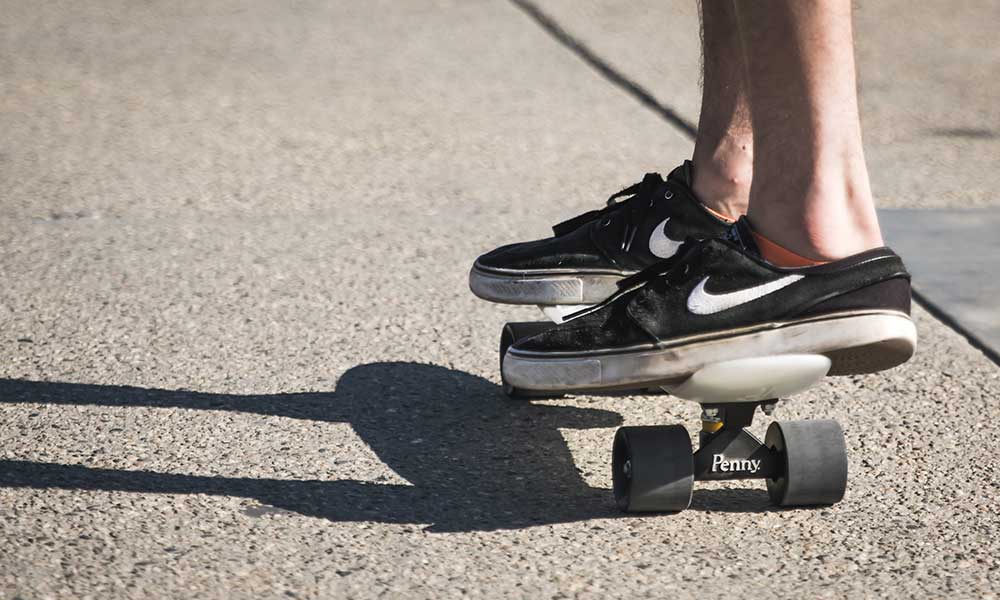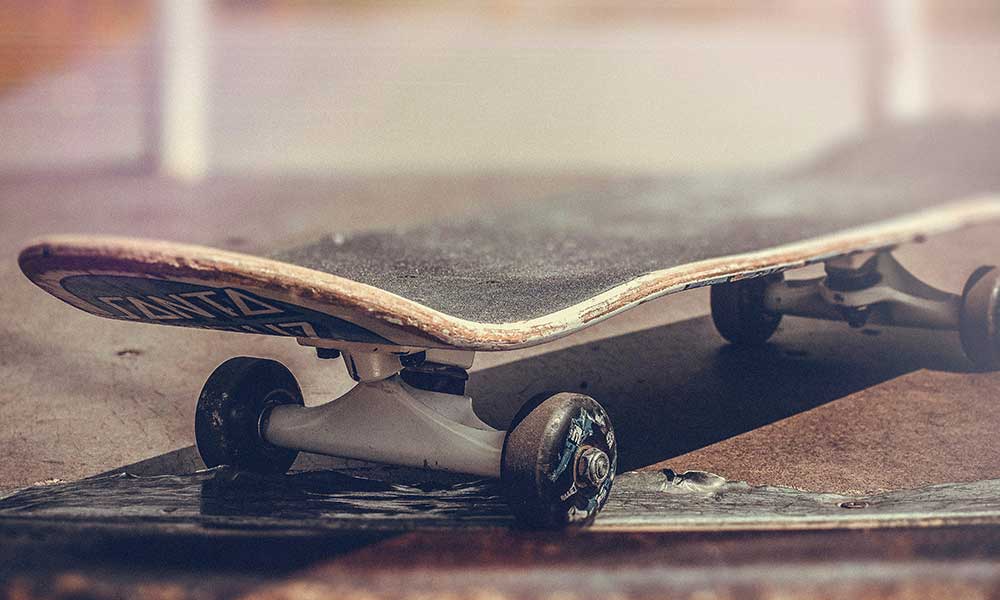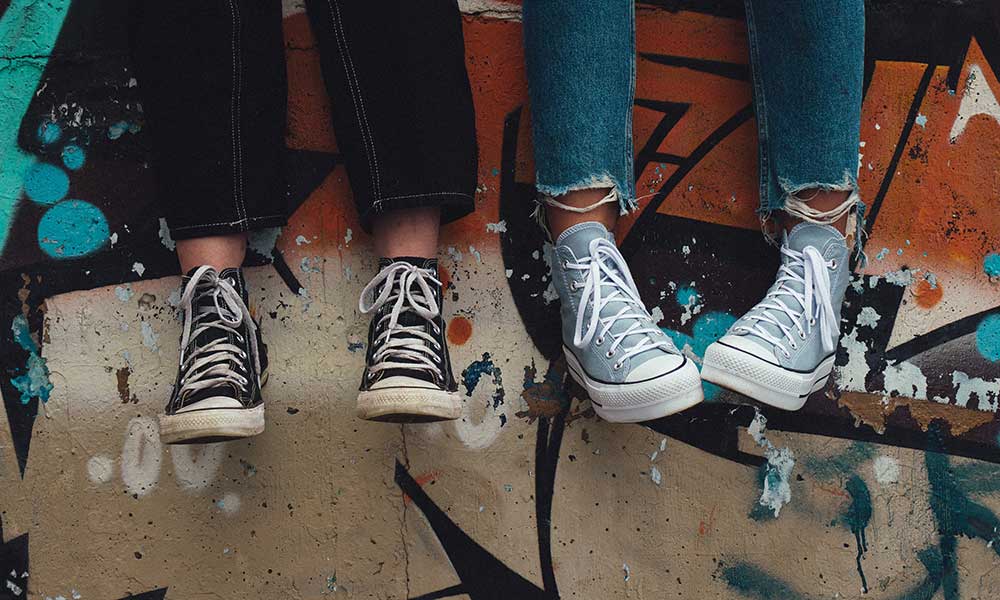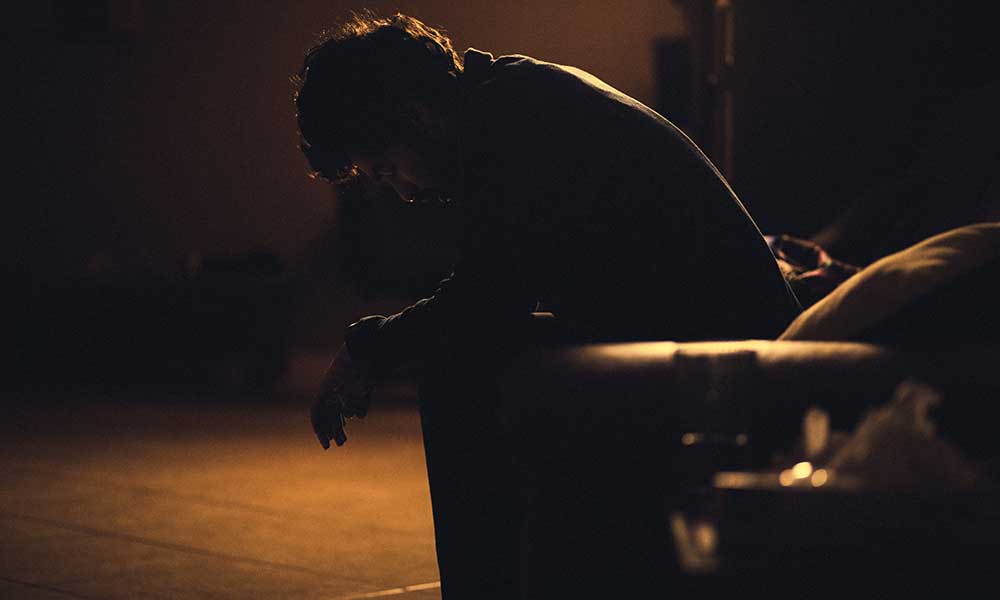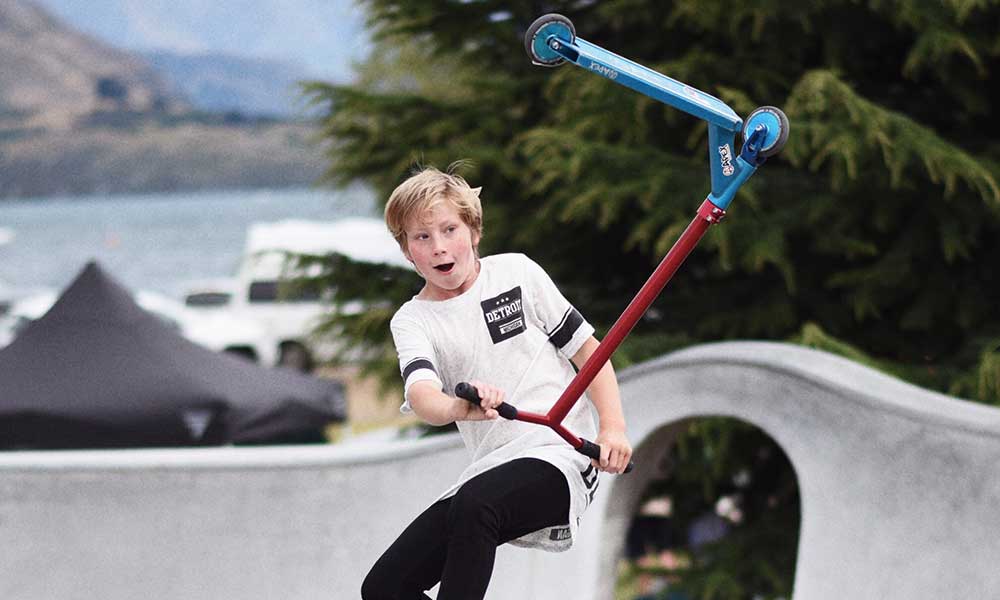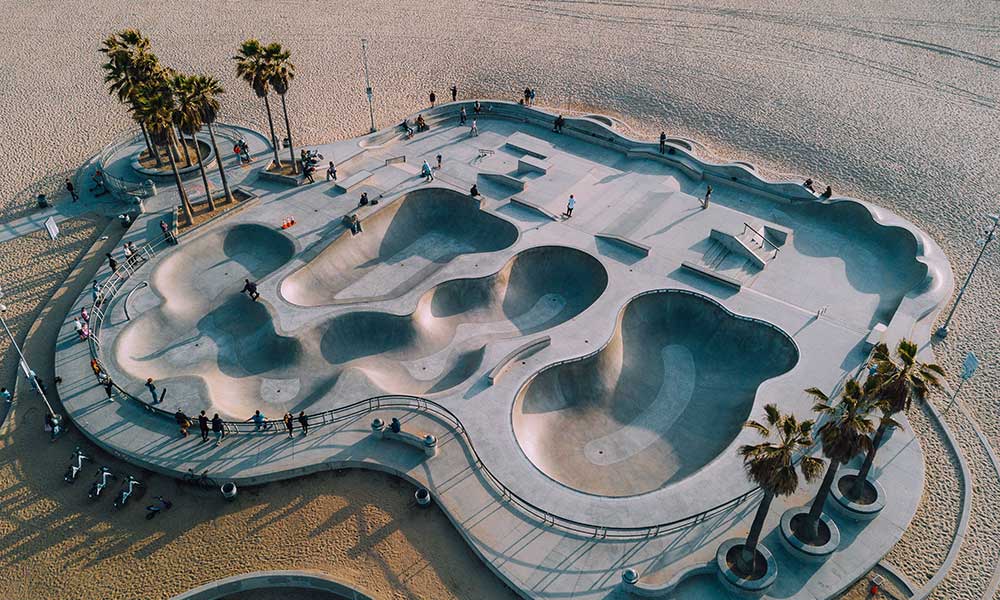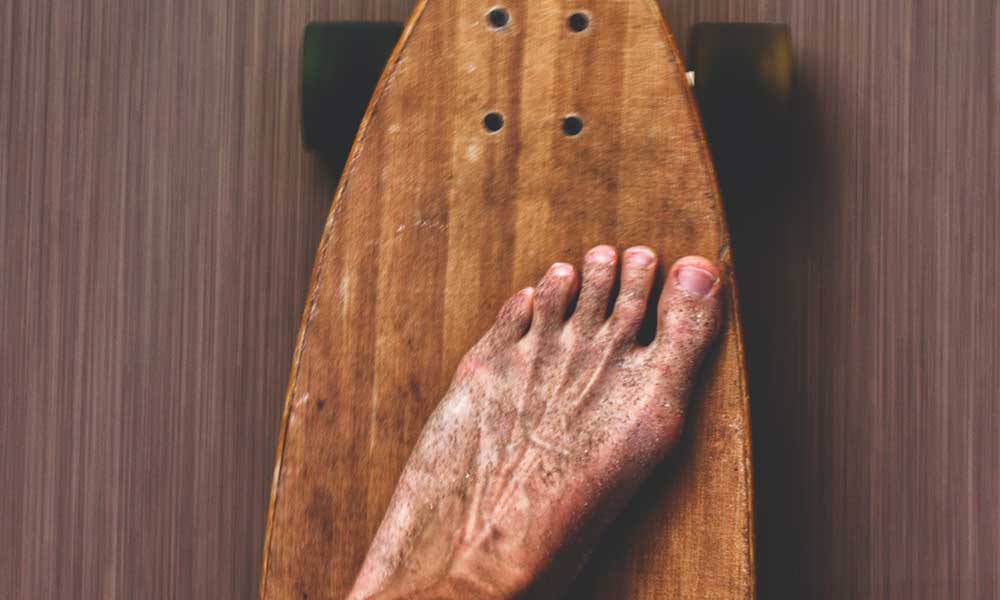Riding switch in skateboarding is when you ride with the opposite stance to what you’re used to.
If you’re right foot dominant and ride regular, “switch” is when you ride goofy. If you’re already goofy, you can “switch” to a regular stance.
Simple, right? Well, not quite. There are a few more things to learn about riding switch and we will address them below.
How Do You Switch On A Skateboard?
As with any skateboarding trick, riding switch tricks takes practice and you’ll likely wipe out the first few times.
To nail this trick, follow these tips:
Don’t Push Mongo
If you’re riding switch for the first time, there’s a good chance you’re still using your dominant foot (now your front foot) to push. If so, you’re “pushing mongo”, and need to stop.
When you switch stance, your pushing foot needs to change as well. If you switch to a goofy stance, push with your left foot; if you switch to regular, push with your right foot.
Practice, Practice, Practice
Practice makes perfect, as the saying goes. Don’t give up after a few attempts just because it doesn’t feel natural, it’s not supposed to!
Persist. If you fall, get back on the skateboard. If you stumble, correct yourself and keep going. The more you ride in a switch stance, the more natural it will feel.
You don’t have to devote your entire skating sessions to riding switch. Simply start by incorporating 5 or 10 minutes of switch practice at the end of a session.
Record Yourself
Record yourself switch skating to see what you’re doing wrong. Set up your smartphone nearby or ask a friend to record you.
Sometimes, it feels like you’re doing everything right, but when you actually watch the footage back, you’ll realize that you’re making some fundamental mistakes.
You can also use the recording to compare your natural stance to your switch stance. If they’re not a mirror image, you’re doing something wrong.
Learn Tricks
Do you remember the first tricks that you learned as a beginner skater? If so, these are the tricks you should learn when riding switch.
Switch ollies are usually a good place to start, and from there you can stick with the tricks that feel more comfortable.
Is Skating Switch Important?
Riding switch can expand your trick set and give you something else to learn in the skate park. Whether it’s necessary or not is entirely down to your personal preference.
If you find that not riding switch is holding you back, then learn. If you’re trying to learn new tricks that require you to switch, start practicing. If you’re getting by fine without it, stick with your normal stance.
Many top skaters don’t learn how to ride switch until they have been skating for years. They reach a point where they feel like they have exhausted the typical box of tricks and they seek a new challenge. Others practice it within the first couple of years. It’s entirely your decision.
Is Switch Like Learning to Skate Again?
Some beginner and intermediate skaters have complained that riding switch is like learning to skate all over again. They often argue that it’s a pointless pursuit, as they’d be better off mastering some intermediate tricks or advancing to a higher skill level.
But that’s not quite true.
You have better balance and control than you did as a beginner. You know how the skateboard reacts to your movements and the environment. You also know how to perform a bunch of tricks. When you first stand on the skateboard, it can feel as awkward and unnatural as when you first learned to skate, but it won’t last.
The learning curve is much shorter. The tricks that took you weeks or even months to learn when you first learned to skate could take you a matter of days when learning to ride switch.
Does Skating Switch Make You Better?
You will feel more comfortable on the skateboard regardless of your stance, but whether or not that makes you a better skateboarder is debatable. At an elite level, it certainly will, but for the average amateur skateboarder, not so much.
Riding Switch vs Riding Fakie
A switch stance is when you ride in the opposite stance (from goofy to regular or regular to goofy). Riding fakie is when you stick with your natural stance but ride with the tail in front and not behind.
In other words, riding switch is when you change position; riding fakie is when the skateboard changes position.
What are the Four Skateboard Stances?
Skateboard stances can be broken down into four different types:
Natural Stance
To a goofy-footed skater, a natural stance means placing the right foot forward and the left foot back. To a regular stance footer, it means placing the right foot back and the left foot forward.
The stance that is right for you will depend on your dominant leg/foot, which should always be your back foot.
Nollie Stance
The nollie stance uses the same natural stance that you’re used to, but with your feet shifted closer to the nose. If you have a goofy stance, your right foot should go on the nose while your left foot goes just behind the middle of the skateboard.
Nollie stands for “nose ollie”.
Switch Stance
Switch stance uses the opposite footing to what you’re used to. Just take the natural stance and flip it.
Fakie Stance
A fakie stance is your natural stance, but with the skateboard facing the other way. This means that the tail of the skateboard is facing in the direction you’re going.
What Is A Switch Trick In Skating?
Ready to start learning some switch tricks? Here’s a list to get you started:
- Switch Backside 180
- Switch Backside 360
- Switch Frontside 180
- Switch Frontside 360
- Switch Backside Pop Shove-it
- Switch Frontside Bigspin
- Switch Frontside Heelflip
- Switch Frontside Kickflip
- Switch Ollie
- Switch 360 Flip
- Switch 360 Hardflip
- Switch Backside Bigspin
- Switch Varial Heelflip
- Switch Varial Kickflip
- Switch Hardflip
- Switch Heelflip
- Switch Backside Heelflip
- Switch Backside Kickflip
- Switch Frontside Pop Shove-it
- Switch Inward Heelflip
- Switch Kickflip
- Switch Laser Flip
You will likely know what these tricks are already. If you can perform them with a natural stance, then switch your foot placement and try them when skating switch!

